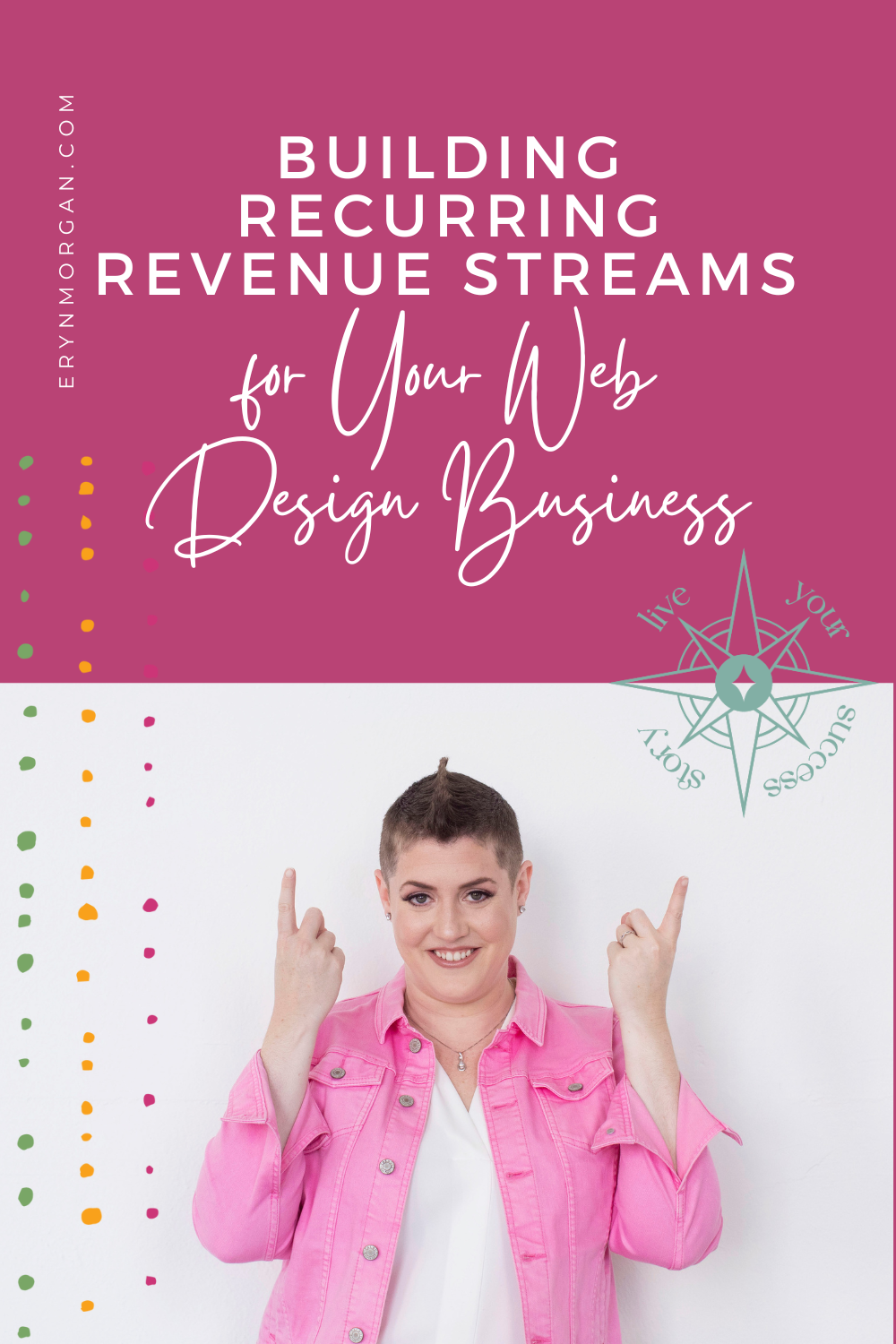Attracting a steady stream of clients is essential for any successful graphic designer. But with so much competition and ever-evolving marketing trends, it can be challenging to know how to get graphic design clients.
As a business coach who’s helped countless creatives thrive, I’ve seen firsthand what works (and what doesn’t!). This guide provides actionable strategies and insights to help you get more graphic design clients and build a thriving creative business.
1. Consider “Outside the Box” Ideal Clients
I’m going to be a bit contrarian from the start by encouraging you to think about your ideal client a little differently when you’re trying to figure out how to get graphic design clients.
Let’s ask some different questions:
What kind of industries, business models, or professions need a volume of good design work consistently? (Examples: chiropractors, real estate agents, financial services)
What industries are typically overlooked by your designer peers? (Examples: construction, smaller municipalities or towns, daycare centers)
Where could your bespoke services be an asset to a client who is misaligned working with a large agency? (This isn’t to say the agency doesn’t do good work, but rather that client doesn’t need the level of infrastructure an agency often provides, along with their price point.)
What kinds of clients could you work with who have staying power and longevity on their side? (Examples: legacy family businesses, utility companies, or healthcare providers.)
How to Get Graphic Design Clients and Recurring Revenue
I had a client who focused on construction services because they needed good design consistently, they paid well, and they didn’t micromanage her during the process. She absolutely loved the freedom and creative control this niche provided, and her business thrived! Another client focused on energy providers (propane, electrical services, etc.) because they had staying power and were often overlooked. This allowed her to build long-term relationships and secure consistent retainer work.
You can absolutely design one-off logos and branding packages. It’s smart to have a portion of your overall revenue come in from these types of projects.
But it’s a missed opportunity not to consider clients who could provide recurring revenue. And sometimes you find them easily by thinking outside the box.
If you put a little extra thought and strategy into this ideal client selection, you can not only showcase your creativity, but also build in lucrative retainer work.
You want to work with clients you love, who respect your creative expertise. That’s a given. But you also have a huge opportunity when you target clients others overlook.
Maybe designing for an electrician or a realtor doesn’t seem especially appealing, but consistent revenue coming in from clients who respect you might just adjust your perspective on this.
Creating a crystal-clear ideal client profile is essential. But how do you actually do that?
- Get Specific: Consider demographics like industry, business size, and location. But don’t stop there! Dive into psychographics: what are their values, interests, and biggest challenges?
- Reflect on Your Experience: Think about the types of projects you enjoy most and the clients you’ve had the best experiences with. What made those collaborations so successful?
- Create a Detailed Profile: Imagine your dream client. Give them a name, a story, and a set of specific needs and goals. The more detailed your profile, the better you can tailor your marketing efforts.
Why is this so important? Because when you know exactly who you’re trying to reach, you can create marketing messages that truly resonate and attract the right clients who value your expertise and are willing to invest in your services.
2. Showcase Your Graphic Design Expertise
Your portfolio is your silent salesperson. It’s often the first impression potential clients have of your work.
But it’s only one piece of the puzzle.
Here’s a secret: depending on your ideal client, they may not notice some of the small details that make up great design.
Why does this matter? Because sometimes helping your ideal client see themselves is just as important as the creativity of your portfolio.
Clients are inherently focused on their own business challenges and goals.
They’re thinking, ‘How can this graphic designer help ME attract more customers, build my brand, and increase my revenue?’
It’s not that they don’t appreciate good design, but they need to understand how it directly benefits THEM.
So, when showcasing your portfolio, don’t just present beautiful visuals. Highlight the results you’ve achieved for other clients.
Explain how your designs helped them solve a problem, reach a wider audience, or boost their sales. For example, if you’re targeting realtors, showcase how your branding and marketing materials helped other realtors attract more buyers and sellers. Make it about THEM, not just about your design skills.
- Curate with Intention: Don’t just throw every project you’ve ever done into your portfolio. Choose projects that align with your ideal client’s needs and highlight your strengths.
- Tell a Story: Go beyond just displaying pretty visuals. Each project should tell a story. Explain the client’s challenge, your creative solution, and the positive outcomes achieved.
- Optimize for Visibility: Ensure your portfolio website is user-friendly, visually appealing, and easy to navigate. Don’t forget about SEO! Use relevant keywords and optimize images for search engines.
Now, you might be wondering: Where’s the best place to showcase my amazing portfolio?
Here are a few ideas to get you started:
- Your Website: This is your online home base, so make sure your portfolio shines there.
- Social Media: Platforms like Instagram and Pinterest are perfect for showcasing your visual work.
- Industry Directories: List your business on relevant industry directories and platforms to increase your visibility.
- Local Directories: With trust at an all time low, individuals and businesses are seeking companies they can trust. Consider leveraging resources from your local chamber of commerce or civic associations that have directories to build the local, trusted connection.
3. Network Strategically
Networking isn’t just about handing out business cards; it’s about building genuine relationships and connecting with people who can become clients, collaborators, or referral sources.
- Show Up in Person: Attend industry events, conferences, workshops, and local meetups. Be prepared to ask great questions and listen to the challenges other business owners are having. Your genuine interest in can help lead to the next connection.
- Engage Online: Participate in online communities and groups related to graphic design, your ideal client’s industries, or local business networks. Share your expertise, offer valuable insights, and build relationships.
- Leverage LinkedIn: Optimize your LinkedIn profile to showcase your skills and experience. Connect with potential clients, industry leaders, and other creatives. Engage with their content and share your own to build visibility.
- Tap into Your Existing Network: Don’t forget about your personal and professional connections! Reach out to friends, family, former colleagues, and anyone else who might need your services or know someone who does.
Networking can feel a bit daunting, especially if you’re more of an introvert. But it doesn’t have to be all about awkward small talk and forced connections.
Tips for how to get graphic design clients by networking effectively:
- Be a Giver, Not a Taker: Focus on building genuine relationships and offering value to others.
- Share Your Passion: Talk about your work with enthusiasm and be prepared to explain how you can help potential clients.
- Follow Up: Networking isn’t a one-time event. Follow up with your connections, nurture relationships, and stay top of mind.
4. Content Marketing That Attracts
Content marketing is a powerful way to attract your ideal clients, establish yourself as an expert, and build a loyal following.
- Blog Posts: Share your knowledge, insights, and tips on topics relevant to your target audience. Think about their challenges, questions, and interests.
- Social Media Content: Create engaging visuals and captions that showcase your work, personality, and brand. Use a mix of formats, like images, videos, and stories.
- Free Resources: Offer valuable downloads like templates, checklists, or ebooks to attract leads and build your email list. These freebies should provide a taste of your expertise and encourage people to learn more about your services.
“What kind of content will actually attract my ideal clients?” I hear you asking. It’s not enough to just post pretty pictures (though those are definitely important!).
Here’s the key: focus on content that showcases how your design skills solve problems and deliver results.
Here are a few ideas to get you started:
- Design Trends and Inspiration: Share your insights on current design trends, color palettes, typography, and visual styles.
- Tips and Tutorials: Create tutorials on design tools, techniques, or software.
- Case Studies and Client Success Stories: Showcase your work and the positive impact it has had on your clients’ businesses.
- Behind-the-Scenes: Give your audience a glimpse into your design process, your workspace, or your creative inspiration.
- Branding and Marketing Insights: Share your knowledge on branding, marketing, and visual communication to demonstrate your expertise and attract clients who value those aspects.
5. Overcome Your Fear of Selling
Selling might feel uncomfortable, but it’s a crucial skill for any successful graphic designer. You’re not just selling a service; you’re offering solutions and helping clients achieve their goals.
- Reframe Your Mindset: Shift your perspective on selling. See it as an opportunity to connect with clients, understand their needs, and offer valuable solutions that help them grow their businesses.
- Practice Your Pitch: Develop a clear and concise way to communicate the value of your services. Highlight your unique strengths and how you can help clients achieve their goals.
- Build Confidence: Believe in your skills and the value you bring to your clients. The more confident you are, the more likely you are to attract and convert potential clients.
Selling your services can feel intimidating, right? Many creative entrepreneurs struggle with this.
But here’s the thing: you don’t have to be a pushy salesperson to attract clients and grow your business.
Start here:
- Focus on Relationships: Build genuine connections with potential clients and focus on understanding their needs.
- Practice Communication Skills: Practice active listening, asking clarifying questions, and presenting your services in a clear and persuasive manner.
- Handle Objections with Grace: Learn how to address common objections and concerns in a way that builds trust and confidence.
- Seek Support: Don’t be afraid to ask for help! Connect with mentors, join communities, or work with a coach to gain support and guidance in overcoming your fear of selling.
Conclusion
Learning how to get graphic design clients is an ongoing process, but by implementing these strategies, you can build a thriving graphic design business.
Need help figuring out how to get graphic design clients?
If you’re feeling stuck, overwhelmed, or unsure how to attract your ideal clients consistently, I’m here to help. Schedule a complimentary call with me today, and let’s explore how we can work together to break through those barriers and build the business of your dreams.


